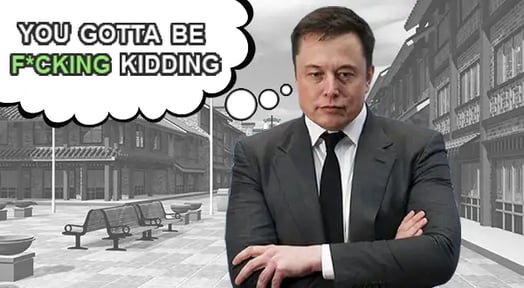Yesterday we wrote about the great US/Chinese tariff-off of 2018 that most recently targeted $34B worth of US exports. Now, as first reported by The Wall Street Journal, we’re already seeing one of our earliest casualties: Chinese Tesla consumers.

As if Elon Musk hasn’t suffered enough production headaches lately, the new tariffs sent prices on Tesla’s Chinese website skyrocketing nearly 20%.
A tariffic time to be in the market for a Tesla
Tesla slashed prices almost 6% after the Chinese government reduced taxes on imported cars by 10% back in May, effective July 1.
But the celebration didn’t last long — the measures imposed 6 days later raised the tariff on Tesla to 40% in total.
A basic Model S now costs roughly $128k, up from $107k last week, and the Model X SUV is up to $140k from $117k.
Why are they getting hit so hard?
Unfortunately for many carmakers, including Tesla, who manufacture exclusively in the US, passenger vehicles are on the list of the 545 US exports targeted.
And, while experts don’t expect it to affect sales immediately (people driving Teslas aren’t exactly pinching pennies), it could become an issue down the line — mainly because Tesla is putting the costs on their customers, instead of eating it like Daimler and BMW.
China is a huge market for Tesla
With around 30 stores in China, the company sold around 17k cars and brought in $2B last year, making the country their 2nd biggest market.
Now, with their market share at risk, the company’s loose plans to someday build factories in China are suddenly a priority (yesterday, they announced their plan to officially get cookin’ in Shanghai).
Tesla said they expect to begin construction “in the near future,” after all the permits are approved, with the goal of producing 500k electronic vehicles in Shanghai annually for the next 5 years.

